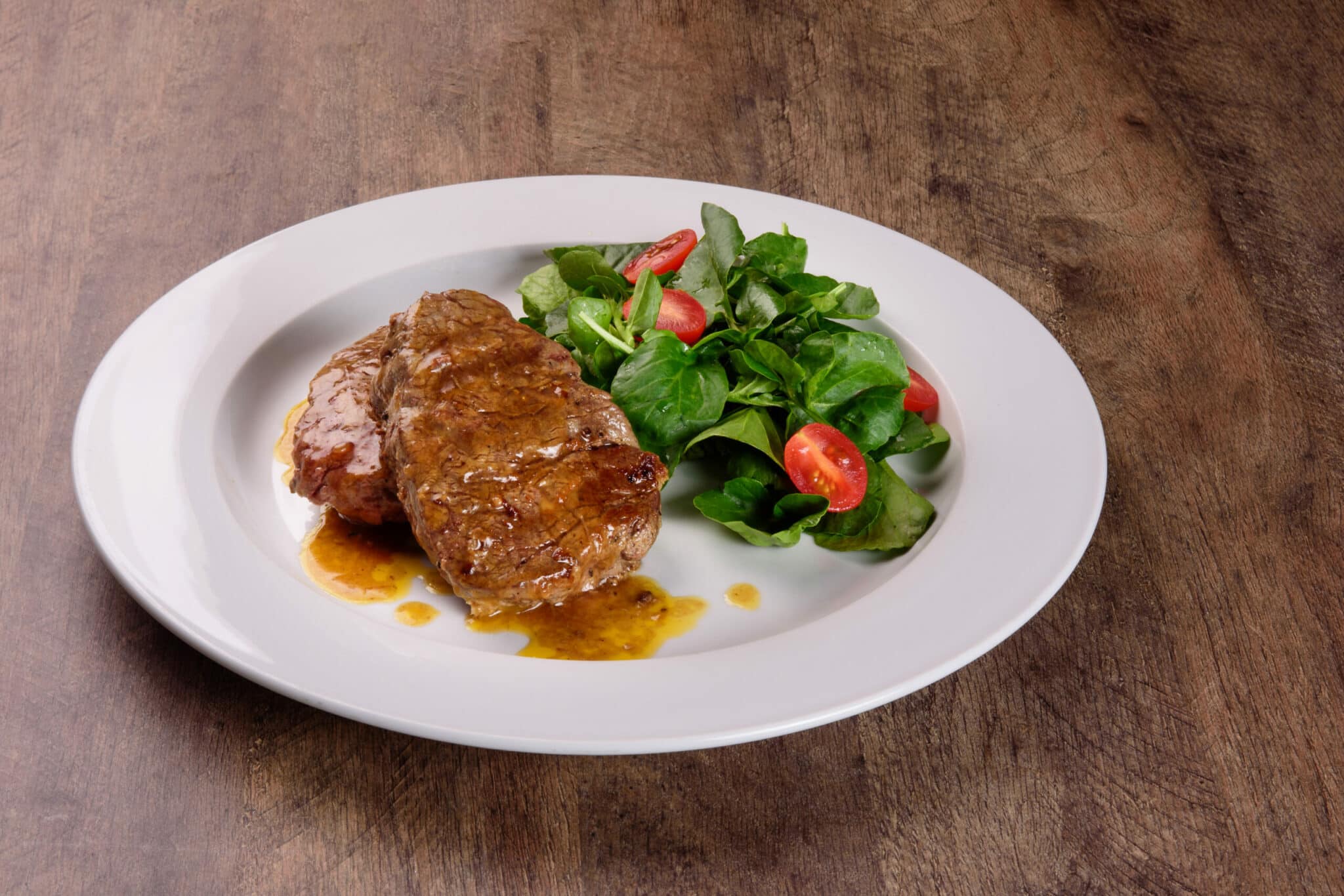When you want to make a delectable beef stew, the quality stock is one of the best things for a demi-glace substitute. This stock must be low in salt or even no salt at all. Once the meat is cooked, and the sauce reduced, strain the mixture and add a few herbs. The French call this sachet d’epices. In this recipe, a bundle of herbs is arranged on a square of cheesecloth. The herbs, including thyme, bay leaf, and parsley stems, are then added to the pot and simmered until the meat is tender and the sauce has a deep rich flavour.
The technique of making beef demi-glace is time-consuming and difficult. Fortunately, numerous simple replacements may be created at home or purchased at a supermarket. You’ll never run out of beef demi-glace with these beef demi-glace alternatives.
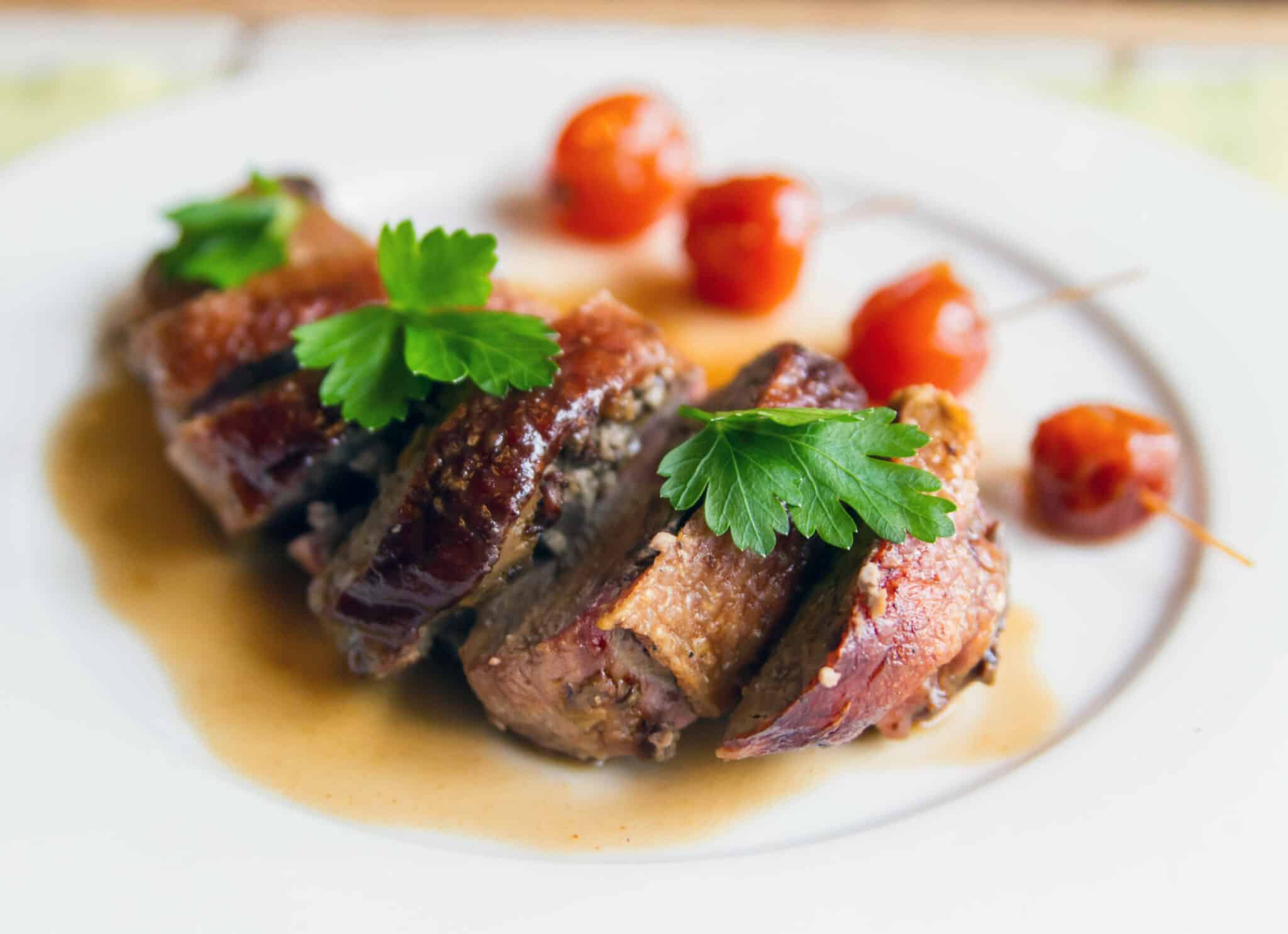
What is beef demi-glace?
A thick sauce similar to beef consomme is beef demi-glace.
It’s prepared by reducing either beef broth or beef stock until the texture is thicker and the flavour is more substantial.
Demi-glace is a traditional French ingredient.
Although veal demi-glace is the classic variety, beef demi-glace is becoming increasingly popular.
The name “glace” comes from the French word “glaze,” which refers to a sauce that has been cut in half (demi).
You can make beef demi-glace from scratch in your own home, but it will take along.
As a result, most people choose store-bought beef demi-glace, which can be found in plastic packages or tin cans at most supermarkets and grocery stores.
Beef demi-glace is often used to produce sauces or gravies to serve alongside meat dishes or drizzled over them.
It can also be used to improve the flavour of soups or stews.
What can be used in place of beef demi-glace?
Here are some items or substances that can be used to replace beef demi-glace if you don’t have any on hand:
1. Beef stock
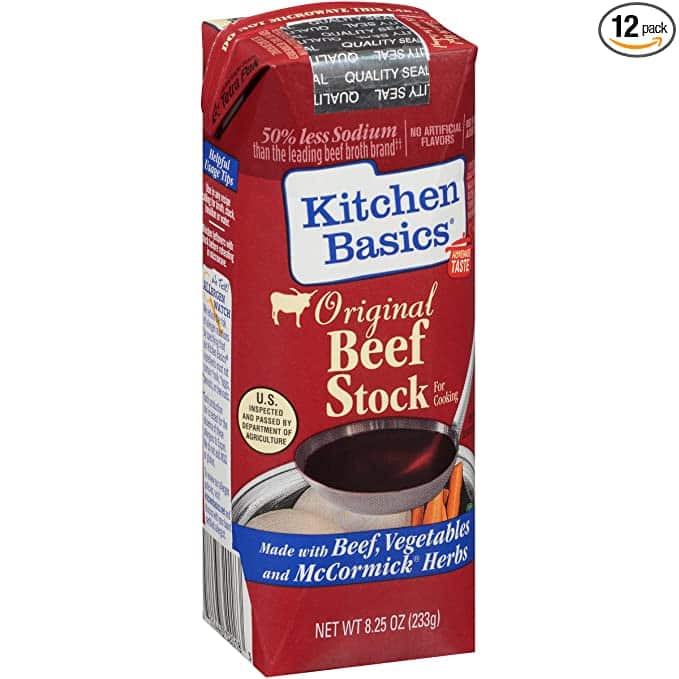
Because beef demi-glace is derived from beef stock, you can use beef stock for the demi-glace version.
There’s no need to lower the stock for a few hours longer because the thin liquid will suffice.
The most incredible beef stock is homemade, but if you don’t have time to prepare it, several varieties of canned beef stock are available.
Beef stock is an excellent substitute for beef demi-glace in recipes that call for a lot of liquid, such as soups or stews, rather than gravies or sauces.
2. Canned beef consomme
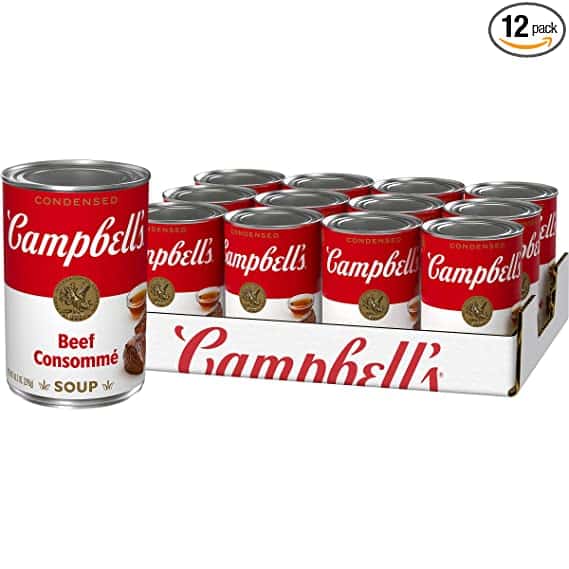
Simply use a high-quality canned beef consomme to achieve the same effect as beef demi-glace.
Beef consomme has a thick texture and a strong flavour like beef demi-glace.
When you buy canned beef consomme, you can save a lot of time in the kitchen while still getting a delicious dinner.
Stick with a reputed brand and the low-sodium variety to keep your good health.
3. Chicken stock
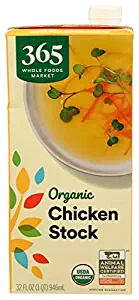
Chicken stock can also be used in place of beef demi-glace.
You can make your own chicken stock by boiling chicken bones with aromatic vegetables, spices, and herbs, or you can buy the canned chicken stock at most grocery shops and supermarkets across the country.
Because the chicken stock has a milder flavour and a thinner texture, you can use additional spices and a thickening agent to make the dish you want.
4. Mushroom stock
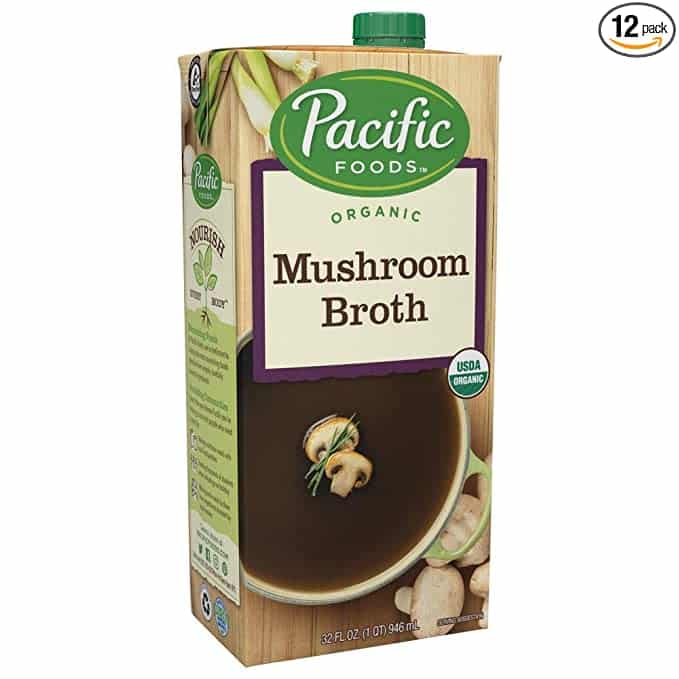
Are you a vegetarian or vegan? Don’t worry; mushroom stock will work well as a beef demi-glace alternative.
The mushroSimplyar to beef products.
It has a distinct umami flavour that enhances the to create your food’s same rich flavour appeal.
Mushroom stock will be a healthy option if you want to cut down on animal protein or go vegan because mushrooms are a substantial source of vegan protein and various vitamins and minerals.
How do you make demi-glace?
It takes a long time to make demi-glace. To start, make a handmade stock with roasted bones and fragrant veggies. After allowing the stock to simmer for up to 24 hours and straining it, it must be reduced by up to 75 percent in 2-4 hours.
Making demi-glace might be scary for some home cooks because of its labour- and time-intensive nature. More Than Gourmet’s demi-glace alternatives are the perfect pantry staple for enjoying the fantastic flavour demi-glace gives without spending days in the kitchen.
Aside from the time savings, the significant advantage of store-bought demi-glace is the available diversity of flavours. While traditional French demi-glace is created with veal and beef, you may also obtain it with chicken, turkey, or vegetables.
What is the difference between high-end and low-end demi-glace concentrates?
High-end
Several companies sell demi-glace concentrates, which can be reconstituted and used in sauces and other recipes that call for it. These highly flavoured concentrates include natural beef and veal stock combined with carrot, onion, celery stocks, red wine, tomato paste, salt, and veal and calf fat. They can be found online and in specialty food stores. After opening, most of these concentrates should be refrigerated. Although the reconstitution ratios differ slightly between brands, 1 oz. of demi-glace concentrate yields 4 to 5 oz. of liquid.
Low-end
Because of the components utilized, lower-end demi-glace sauce concentrates are less than half the price of higher-end concentrates. Modified food starch is the most common ingredient in these concentrates, followed by maltodextrin, cooked beef fat, partially hydrogenated soybean and/or cottonseed oils, concentrated beef broth, butter oil, salt, dextrose, hydrolyzed corn protein, whey, dried beef extract, tomato powder, autolyzed yeast extract, and small amounts of other ingredients.
How to make demi-glace sauce in the Japanese style?
Brown stock is created by roasting veal and beef bones, which might take hours to simmer and reduce. To make demi-glace, you’ll need enough brown stock to keep some for yourself and use the rest to make Espagnole sauce. Espagnole sauce is a traditional brown sauce thickened with roux and created with brown stock, mirepoix (onion, celery, carrot), and tomato paste. Finally, demi-glace is made by combining brown stock and Espagnole sauce.
What are four simple steps to creating a shortcut demi-glace sauce?
Step 1: Purchase stock from a store
This quick demi-glace sauce includes store-bought beef stock (not sponsored), which cuts cooking time in half right away. If you have some excellent bones on hand and are willing to put in the effort, you may make your own veal or beef stock for a richer, more delicious product. Alternatively, the store-bought stock might suffice.
Step 2: Make espagnole sauce quickly
I enjoy roasting mirepoix (onion, celery, and carrot) in the oven after softly sauteing them on the stovetop to add additional flavour to the sauce. Then cook and reduce the vegetable mixes with tomato paste, wine, beef stock, and a bouquet garni (see below). Be patient and cook for 1 to 1.5 hours to decrease the sauce. Because it’s an inactive phase, you can use it to prepare other foods.
Step 3: Make broun roux
Making brown roux for the demi-glace sauce is essential. Make sure you don’t burn the roux by paying close attention. Continue to whisk until the roux turns a deep brown hue, almost chocolate-like. The flour must be heated through at this point so that the demi-glace sauce does not taste “floury.”
You can make Japanese curry roux or bechamel sauce (white sauce) to make Cream Stew from scratch once you’ve mastered the roux.
Step 4: Make demi-glace sauce by combining espagnole sauce and brown roux.
The final step is simple. Simply combine the Espagnole sauce and the brown roux. Your Shortcut Demi-Glace is now complete and ready for a variety of applications. One of my favourites for the demi-glace sauce is to prepare Hayashi Rice, also known as Hashed Beef, a classic Western-style stew with tender beef, onions, and mushrooms.
How to store demi-glace?
Having demi-glace on hand assures that you’ll never be without it in your kitchen.
When stored in a sealed container, demi-glace will last up to two weeks in the refrigerator.
It can also be frozen for up to three months.
This recipe, unlike traditional demi-glace, will not gel when cooled (store-bought stock lacks the gelatin of homemade stock cooked with bones). Because you can’t store demi-glace the traditional way, freeze it in ice cube trays and transfer it to freezer bags. Thaw as many as you’ll need for a particular dish.
How to use demi-glace?
A little demi-glace can flavour stews, soups, and stir-fries and stand alone as a sauce for steak, roast beef, or pork chops. It’s also the foundation for a variety of sauces, including:
You may make a basic red wine sauce by adding some red wine and reducing it for a few minutes.
Combine the demi-glace with the fortified wine and butter to produce a port wine sauce.
Demi-glace is cooked with mushrooms, shallots, and sherry to make a typical mushroom sauce.
What are five mother sauces?
Béchamel
Béchamel sauce is the creamy white sauce that gives chicken pot pie its creamy texture and the binder for all of the cheese in macaroni and cheese. Scalloped potatoes, lasagne, and gravy are all made using the sauce. Béchamel can be served with fish, eggs, or steamed chicken in traditional cuisine. While béchamel has a neutral flavour, it lends an exceptionally creamy texture to cuisine that makes it seem hearty and comfortable.
Velouté
Velouté, which means velvet in French, describes the texture of this original mother sauce. Cooks build a roux with butter and flour before adding clear stock to make velouté. The most popular stock ingredients are chicken, turkey, and fish; however, vegetarian velouté is also available.
Velouté has a delicate, mild flavour and a silky texture when done. The sauce is typically served with poached or steamed fish or chicken; the sauce’s light flavours suit the delicate meat. Cooks can change the flavour of this mother sauce by adding wine, lemon, or other flavourings.
Espagnole
This dark brown sauce, one of Carême’s original mother sauces, provides boeuf bourguignon, lamb, duck, veal, and other heavy meals their trademark richness. Demi-glace, sauce Robert, and bordelaise sauce are all made with Espagnole.
Espagnole, like the other mother sauces, begins with a roux. The flour paste is heated until it browns in this case, and cooks must whisk the roux as it browns to prevent the paste from scorching.
After the roux has completed cooking, add the browned mirepoix (a blend of diced celery, carrots, and onion), pureed tomato, and beef or veal stock.
Tomato sauce
The tomato sauce, or sauce tomato, is similar to the Italian tomato sauce served with pasta. This mother sauce is frequently served with grilled meat or veggies on top of pasta (particularly gnocchi) or polenta. The sauce tomato was thickened using a roux in Carême’s day, but this is no longer the case.
Tomatoes are now reduced to a thick sauce with vegetables and pig flavourings. R roux can thicken the sauce rapidly if you don’t have much time. In the early twentieth century, Carême defined sauce tomato as a mother sauce.
Hollandaise
Hollandaise sauce is most commonly associated with eggs benedict or as a topping for delicately cooked asparagus. More heavy items, such as meats, can also be served with the sauce. This sauce, like sauce tomato, was added later to Carême’s list.
Egg yolks are suspended in melted butter to make a creamy, rich Hollandaise sauce. Cayenne pepper, white wine vinegar, or lemon juice are all options for seasoning Hollandaise. Hollandaise is the foundation for several classic French sauces, including Bearnaise.
To prepare Hollandaise, carefully whisk together the egg yolk and melted butter to form an emulsion. Because the sauce can easily break, separating the butter from the egg yolk, new cooks sometimes struggle with Hollandaise.
Conclusion
Although beef demi-glace is delicious, the prospect of making your own is enough to make your head spin. Furthermore, the retail version is not always available. Thankfully, there are many alternatives to this item, ranging from various beef products to chicken or vegan alternatives. You may quickly produce the tastiest dish with these beef demi-glace replacements.
